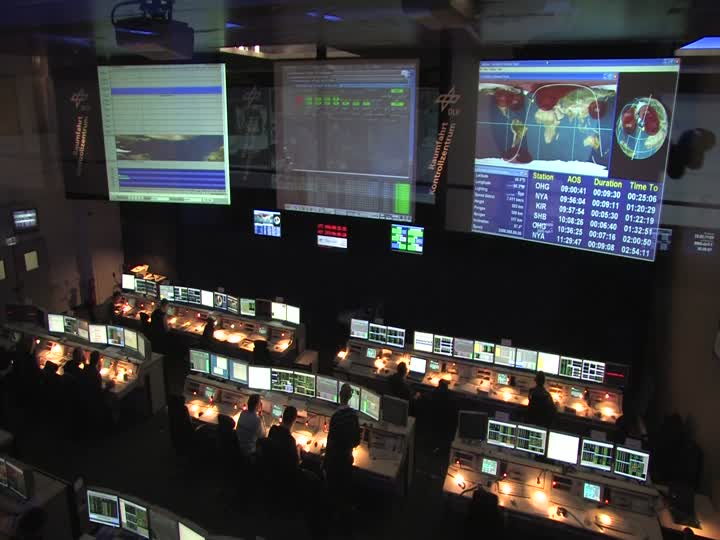The naval electro-optics systems consist of multi-sensor imaging modules catering to the needs for surveillance, monitoring, fire control, and panoramic search-and-track. In addition, the electro-optic enables the detection of all airborne and surface threats, both symmetrical and asymmetrical, regardless of the time of the day and weather conditions. Moreover, for high sea and coastal security operations, electro-optic systems provide surveillance, fire control, and air defense systems for several surface vessels, including aircraft carriers, frigates, corvettes, ocean and coastal patrol boats, and high-speed craft. Moreover, electro optic sensors are operational in various airborne, ground, and naval applications, providing position and orientation data required for operation and target acquisition. Also, the sensors provide early-warning, abnormal activity monitoring, incident management, and comprehensive observation and reaction capabilities.
Furthermore, electro-optic has enabled successful mission execution, possessing unique features and capabilities best suited for naval targeting, surveillance, and situational awareness. Companies in the market are designing an electro-optic solution to provide superior operation and surveillance in a lightweight and lower-cost package that effectively supports multiple mission requirements for full-spectrum surface detection, identification, surveillance, and target assessment.
L3HARRIS TECHNOLOGIES INC, ASELSAN AS, THALES SA, TELEDYNE FLIR LLC, AND ELBIT SYSTEMS LTD ARE AMONG THE KEY MARKET PLAYERS OPERATING IN THE ELECTRO-OPTICS IN NAVAL MARKET.
Based on technology, the electro-optic in the naval market is segmented into camera, sensor, laser range finder, and others. The camera segment dominated electro-optic market in 2021, as electro-optic camera in maritime imaging systems provides a critical capability to enhance navigation, intelligence, surveillance, and reconnaissance. By application, the market is segmented into target detection identification and tracking, surveillance, fire control, and others. Based on end use, the market is bifurcated into defense and commercial. The defense segment is further segregated into frigates, corvettes, destroyers, aircraft carriers, submarines, and others. The defense segment acquired major electro-optic market share in 2021 due to rapid incorporation of unmanned surface vehicle (USV) in the defense industry, which are remotely controlled and highly autonomous—conducts a wide spectrum of defense and maritime security missions. The commercial segment is further classified into cruise ships, merchant vessels, and cargo ships. By region, the market is segmented into North America, Europe, Asia Pacific, the Middle East & Africa, and South & Central America.
North America held the largest share of the global electro optic in the naval market in 2021. Over the years, countries in North America, have experienced a rise in their military expenditure for enhancing their land, sea, and air troop capabilities, which is leading to the adoption of advanced technologies among the military forces. In February 2022, the US Navy awarded a contract to Teledyne FLIR, a subsidiary of Teledyne Technologies, to maintain and supply BRITE Star II multi-sensory imaging systems for the US Navy’s H-1 program. Also, there is increased adoption of advanced camera and sensor technologies in naval ships for applications such as target detection, tracking, surveillance, and fire control. All these factors are collectively boosting the market growth.
The Asia Pacific electro optic in the naval market is expected to grow tremendously during the forecast period. Collective efforts by private players and defense agencies in China, Japan, India, South Korea, and other emerging economies in investments in electro optic in naval are expected to flourish the market growth in Asia Pacific during the forecast period. Moreover, the rise in military expenditure of the countries mentioned above is influencing the demand for naval vessels and other advanced technologies such as cameras and sensors, thereby contributing to the APAC electro-optics in naval market growth.
The top ten companies in the market include Safran SA; L3Harris Technologies, Inc.; Ultra Maritime; Tonbo Imaging; Aselsan AS; Elbit Systems Ltd.; SAAB AB; Chess Dynamics; Isreal Aerospace Industries Ltd.; and Naval Group. The above listing of key players is derived by considering factors such as overall revenue, new product launches, market initiatives, investment in technology up-gradation, mergers & acquisitions, and other joint activities. A few of the industry’s important market initiatives and product developments are mentioned below. A few of the important market initiatives and product developments from the industry are mentioned below:
| Year | News |
| 2022 | A team led by L3Harris Technologies was selected to provide the shipboard panoramic electro-optic/infrared (SPEIR) system to the U.S. Navy that will provide improved fleet protection. The initial $205 million contract has a potential value of $593 million if all options are exercised through March 2031. |
| 2022 | Navy asks L3Harris to provide shipboard electro-optical targeting sensors to help warships hit their targets. Military electro-optics experts at L3Harris Technologies Inc. will provide shipboard sensors for the fire-control necessary for U.S. Navy and Coast Guard warships to hit enemy ships and aircraft with naval gun fire under terms of a $13.7 million order. |
| 2022 | Safran Electronics & Defense and MBDA completed the acquisition of ArianeGroup’s 63% majority stake in CILAS, a French company specializing in engineering and manufacturing laser and electro-optical products for naval surface systems. The acquisition was carried out through a joint company created for the purpose called HMS Laser, equally owned by Safran Electronics & Defense and MBDA. |



